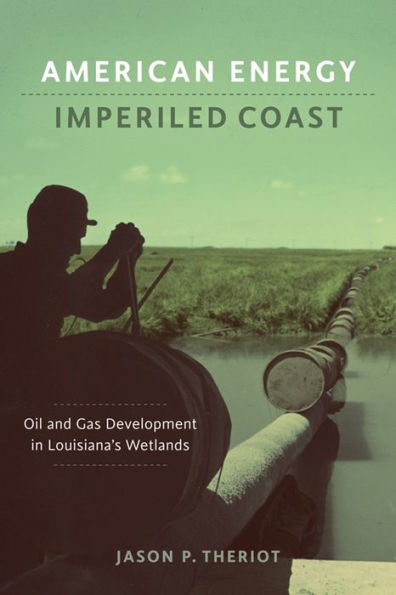
American Energy, Imperiled Coast: Oil and Gas Development in Louisiana's Wetlands
328
American Energy, Imperiled Coast: Oil and Gas Development in Louisiana's Wetlands
328Hardcover
-
PICK UP IN STORECheck Availability at Nearby Stores
Available within 2 business hours
Related collections and offers
Overview
In American Energy, Imperiled Coast Jason P. Theriot explores the tension between oil and gas development and the land-loss crisis in Louisiana. His book offers an engaging analysis of both the impressive, albeit ecologically destructive, engineering feats that characterized industrial growth in the region and the mounting environmental problems that threaten south Louisiana's communities, culture, and "working" coast. As a historian and coastal Louisiana native, Theriot explains how pipeline technology enabled the expansion of oil and gas delivery — examining previously unseen photographs and company records — and traces the industry's far-reaching environmental footprint in the wetlands. Through detailed research presented in a lively and accessible narrative, Theriot pieces together decades of political, economic, social, and cultural undertakings that clashed in the 1980s and 1990s, when local citizens, scientists, politicians, environmental groups, and oil and gas interests began fighting over the causes and consequences of coastal land loss. The mission to restore coastal Louisiana ultimately collided with the perceived economic necessity of expanding offshore oil and gas development at the turn of the twenty-first century. Theriot's book bridges the gap between these competing objectives.
From the discovery of oil and gas below the marshes around coastal salt domes in the 1920s and 1930s to the emergence of environmental sciences and policy reforms in the 1970s to the vast repercussions of the BP/Deepwater Horizon oil spill in 2010, American Energy, Imperiled Coast ultimately reveals that the natural and man-made forces responsible for rapid environmental change in Louisiana's wetlands over the past century can only be harnessed through collaboration between public and private entities.

Product Details
| ISBN-13: | 9780807155172 |
|---|---|
| Publisher: | Louisiana State University Press |
| Publication date: | 04/14/2014 |
| Series: | The Natural World of the Gulf South , #2 |
| Pages: | 328 |
| Product dimensions: | 5.90(w) x 9.00(h) x 1.20(d) |
About the Author
Table of Contents
Preface vii
Introduction 1
1 An Energy Landscape Emerges 15
Early Coastal Oil and Gas Development
2 Postwar Pipelines Span the Coast 41
Building the Three Hundred-Mile Muskrat Line
3 Offshore Expansion and Environmental Reform 74
The Blue Water Pipeline System
4 America's First Offshore Oil Port 104
LOOP and the Science of Wetland Ecology
5 The Coastal Erosion Crisis 131
Wetland Loss and the Oil Field Canal Debate
6 The Coastal Restoration Campaign 163
From the Breaux Act to Coast 2050
7 America's Energy Coast 185
Redefining Restoration in the Gulf
Conclusion 220
A Sustainable Energy Coast for the Twenty-First Century
Notes 229
Selected Bibliography 253
Index 261
What People are Saying About This
"American Energy, Imperiled Coast provides a great description of the tremendous changes in economics, culture, environment and politics of the great delta of North America. Jason Theriot's writing is true to what bayou people have experienced and will explain to all readers why we are dealing with these great changes. His book clearly speaks to the challenges that bayou communities face in maintaining the difficult balance of economy, environment, and infrastructure." — Windell Curole, South Lafourche Levee District
"American Energy, Imperiled Coast is a creatively researched history of the complex and controversial relationship between energy development and wetlands destruction along Louisiana's Gulf Coast. Weaving together stories of environmental and technological change, social and cultural adaptation, coastal and marine science, and politics and policymaking, Theriot's study is truly groundbreaking. Most importantly, it demonstrates that the trade-offs between oil and gas provision and environmental protection along this imperiled coast are not only a vital regional concern, but a national one as well." — Tyler Priest
"Ever readable and always even-handed, Theriot offers a much-needed investigation into the beguiling history, the fascinating science, and above all the byzantine politics of what may be the nation's worst ongoing environmental crisis, as year by year a huge and valuable slice of America's Energy Coast slides irreplaceably into the sea." — Glen Pitre
